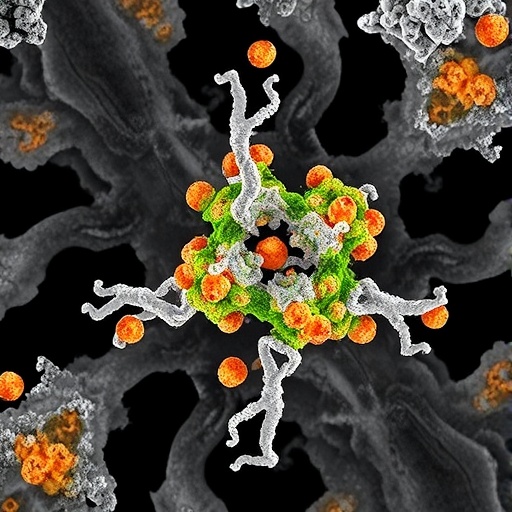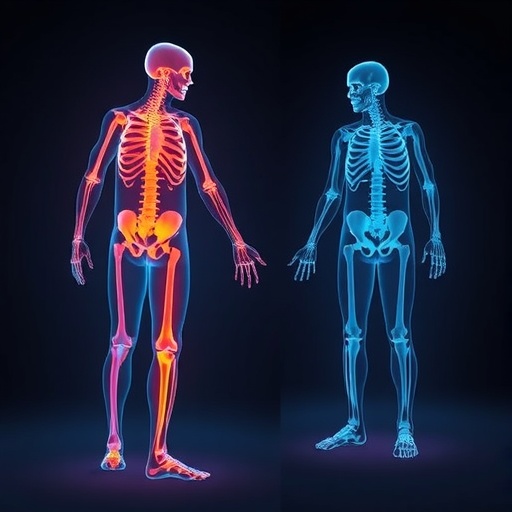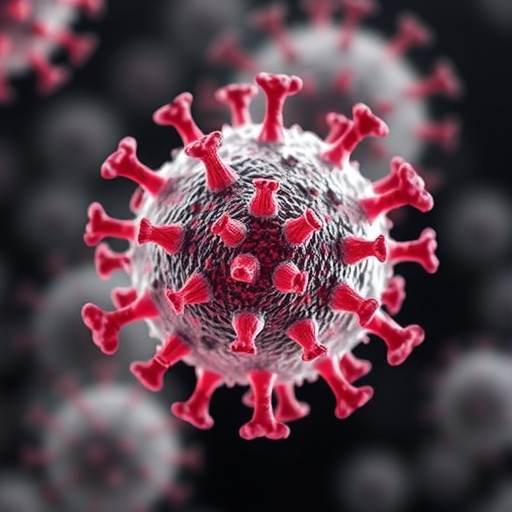In a groundbreaking study published in Nature Communications, researchers have unveiled the intricate cryo-electron microscopy (cryo-EM) structure of the full-length LGR4-RSPOs complex, uncovering a crucial molecular interaction with profound implications for obesity therapy. This revelation not only advances our understanding of the LGR4 receptor and its endogenous ligands, the R-spondins (RSPOs), but also introduces a novel targeting nanobody that promises to revolutionize anti-obesity treatment strategies. The study represents a pivotal leap in structural biology, receptor signaling, and therapeutic development, bridging basic molecular insights with potential clinical applications.
Leucine-rich repeat-containing G protein-coupled receptor 4 (LGR4) plays a vital role in multiple physiological processes, including development, immune regulation, and metabolic homeostasis. It is a member of the G protein-coupled receptor (GPCR) superfamily, known for its diverse functional repertoire. The RSPO family proteins serve as potent ligands that orchestrate LGR4-mediated Wnt signaling pathways, which are fundamentally tied to cell proliferation, differentiation, and tissue regeneration. Prior to this study, the molecular basis of the LGR4-RSPO complex formation remained elusive, limiting targeted therapeutic exploration.
Employing state-of-the-art cryo-EM, Zhang and colleagues resolved the LGR4-RSPOs complex at near-atomic resolution, offering unprecedented insight into the receptor-ligand interface. The full-length receptor was analyzed, encompassing both the extracellular domain responsible for ligand binding and the transmembrane helices pivotal for downstream signaling. This comprehensive structural elucidation revealed a sophisticated binding pocket shaped by LGR4’s leucine-rich repeat (LRR) motifs, elegantly accommodating various RSPO isoforms.
The implications of this structural determination extend beyond fundamental biochemistry. Importantly, the characterization of the LGR4-RSPOs interface illuminated critical residues responsible for ligand recognition and affinity. These findings enable rational design of molecular agents capable of modulating this interaction with high specificity. This advance is particularly pertinent in the context of metabolic disorders where aberrant Wnt signaling contributes to pathogenic adipogenesis and energy imbalance.
Capitalizing on their structural insights, the research team engineered a nanobody—a small, single-domain antibody fragment—capable of selectively binding to LGR4. This nanobody was designed to competitively inhibit RSPO engagement, effectively modulating LGR4 activation. In vitro assays demonstrated that this nanobody could attenuate downstream signaling events, reducing Wnt pathway activation in cellular models associated with adipocyte differentiation and lipid accumulation.
The therapeutic potential of the nanobody was further evaluated in in vivo models exhibiting obesity phenotypes. Administration of the nanobody resulted in significant reductions in weight gain, adipose tissue mass, and systemic markers of metabolic dysfunction. These compelling preclinical results forge a promising pathway toward the development of targeted anti-obesity therapeutics with enhanced efficacy and decreased off-target effects compared to existing pharmacological agents.
One remarkable aspect of this study lies in the nuanced understanding of allosteric modulation within the LGR4 receptor complex. The structural data revealed conformational dynamics in the transmembrane domain upon nanobody binding, suggesting mechanisms by which receptor activation can be fine-tuned. This contributes to a broader framework for GPCR-targeted drug discovery, emphasizing precision medicine approaches tailored to receptor conformations and functional states.
Moreover, the research underscores the importance of RSPO isoform diversity in LGR4 signaling. Subtle variations in RSPO structure translated to differential binding modes and signaling outcomes, reinforcing the complexity of receptor-ligand interactions in physiological and pathological contexts. This insight may help explain tissue-specific effects of RSPOs and opens the door to isoform-selective therapeutic targeting.
In a broader biological context, the modulation of the Wnt signaling pathway via the LGR4-RSPO axis spotlights the intersection of developmental biology and metabolic control. Dysfunctional Wnt signaling is implicated in not only obesity but also cancer, fibrosis, and bone density disorders. Therefore, strategies that manipulate this pathway must balance efficacy with safety, making the precise structural and functional characterization achieved here invaluable.
The integration of cryo-EM into receptor pharmacology heralds a new era of drug development, where molecular blueprints guide the creation of bespoke therapeutic molecules. The nanobody described by Zhang et al. exemplifies this approach, capitalizing on high-resolution structural data to achieve potent and selective receptor modulation. This method bypasses traditional trial-and-error screening, potentially accelerating timelines from bench to bedside.
Beyond pharmacology, the study’s findings may facilitate biomarker discovery for metabolic diseases. Understanding the molecular determinants of LGR4 activation and RSPO engagement allows for the identification of molecular signatures associated with disease states. Such biomarkers could enable early diagnosis, stratified therapy, and monitoring of treatment response, enhancing clinical outcomes.
Looking ahead, the challenge will be translating these molecular findings into human clinical contexts. Issues such as nanobody delivery, stability, immunogenicity, and off-target effects require meticulous investigation. However, the groundwork laid by this structural and functional analysis provides a robust platform from which translational efforts can proceed.
Collaboration between structural biologists, pharmacologists, and clinicians will be essential to fully harness the therapeutic promise of the LGR4-RSPO nanobody. Personalized medicine strategies may emerge, where patients’ specific receptor-ligand interaction profiles dictate tailored interventions targeting metabolic pathways implicated in obesity and related disorders.
In essence, this study epitomizes the transformative potential of integrating high-resolution structural biology with therapeutic innovation. By demystifying the LGR4-RSPO complex and demonstrating the feasibility of receptor modulation through nanobodies, it opens new frontiers in the fight against obesity—a global health crisis demanding sophisticated, targeted solutions.
This work also exemplifies the power of cryo-EM in elucidating membrane protein complexes, a historically challenging class of targets due to their dynamic nature and structural complexity. As cryo-EM technology continues to evolve, studies like this will become increasingly commonplace, propelling a wave of novel discoveries and therapeutic breakthroughs.
The societal implications of advancing anti-obesity therapies cannot be overstated. With obesity linked to myriad health problems including cardiovascular disease, diabetes, and cancer, effective treatments rooted in precise molecular targeting offer hope for millions worldwide. The LGR4-RSPO-nanobody axis thus stands as a beacon of innovation with real-world impact.
In summary, the detailed characterization of the full-length LGR4-RSPO complex and the pioneering development of a targeting nanobody heralds a paradigm shift. It redefines possibilities in receptor biology and therapeutic design, illustrating how fundamental structural insights can catalyze new avenues for combating complex diseases. Future research building on these findings may transform current approaches to metabolic health and beyond.
Subject of Research: Structural and functional analysis of the full-length LGR4-RSPOs complex and development of a targeting nanobody for anti-obesity therapy.
Article Title: Cryo-EM structure of the full-length LGR4-RSPOs complex and a targeting nanobody for anti-obesity therapy.
Article References:
Zhang, Z., Wang, L., Qiao, H. et al. Cryo-EM structure of the full-length LGR4-RSPOs complex and a targeting nanobody for anti-obesity therapy. Nat Commun 16, 8406 (2025). https://doi.org/10.1038/s41467-025-63410-5
Image Credits: AI Generated
Tags: anti-obesity treatment strategiesclinical applications of cryo-EM.cryo-electron microscopyG-protein-coupled receptor researchLGR4-RSPO complex structuremolecular insights in obesitynanobody targeting for obesityobesity therapy advancementsreceptor-ligand interactionsRSPO family proteins and Wnt signalingstructural biology breakthroughstherapeutic development in metabolic diseases





